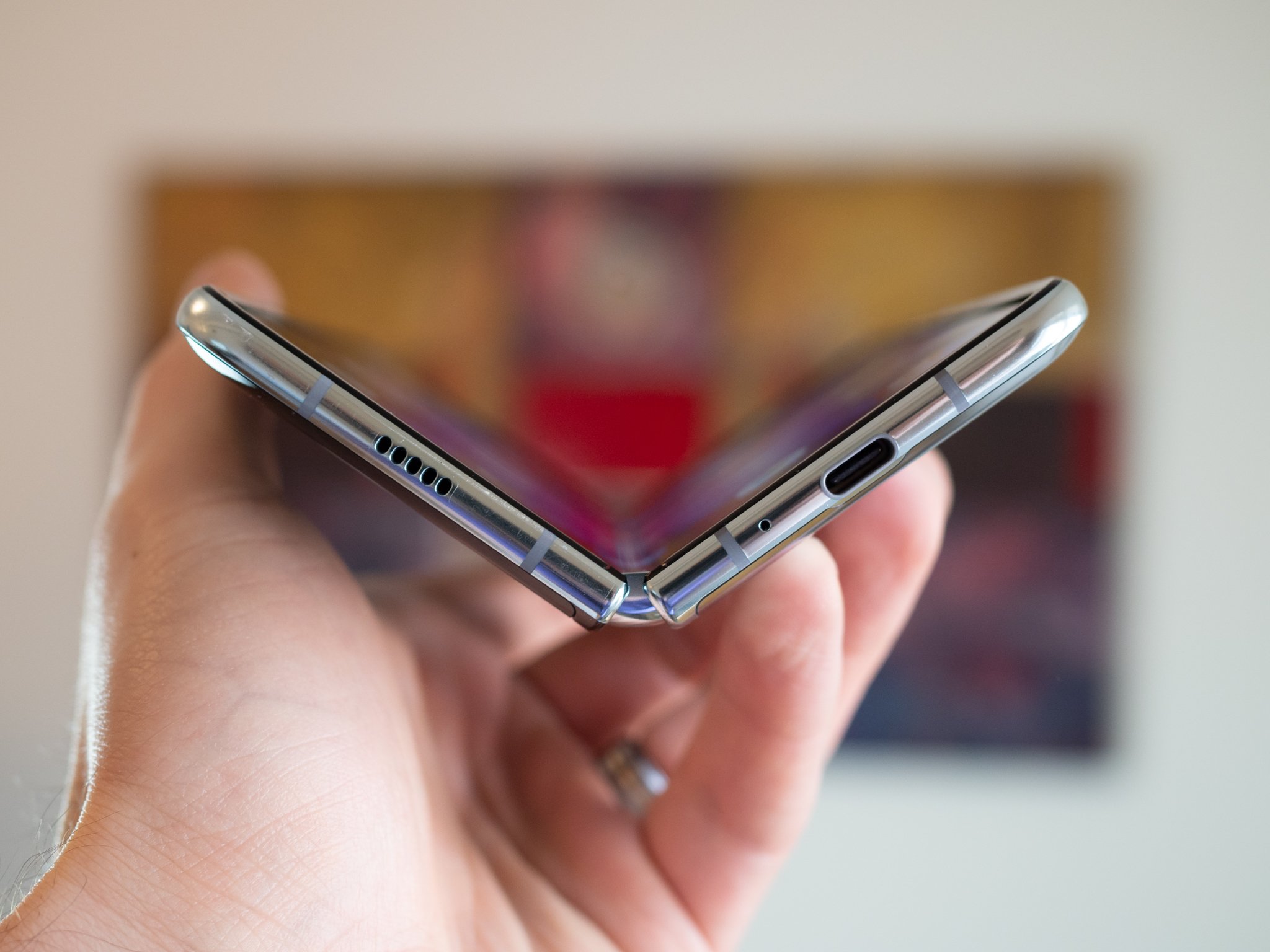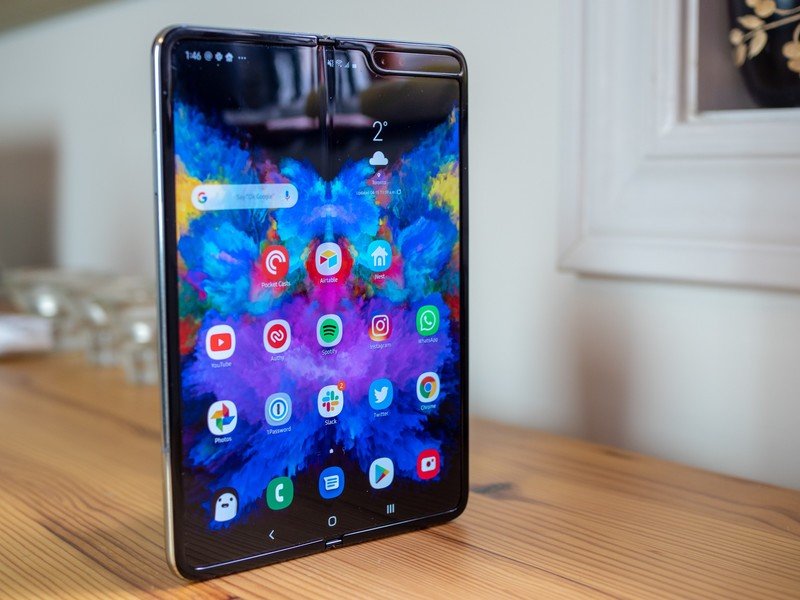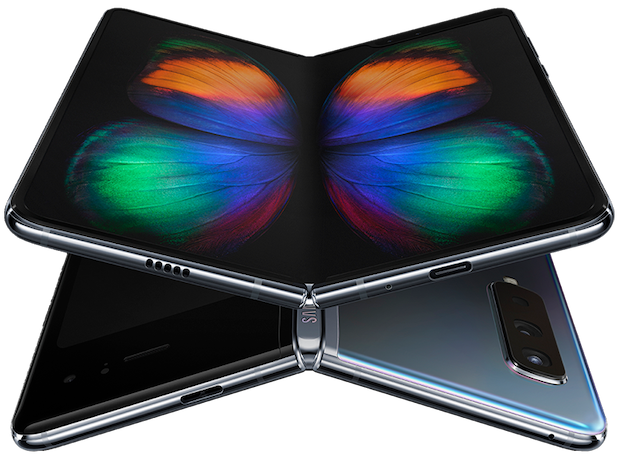Here's why Galaxy Fold displays are already failing

Just a couple of days after journalists, including us here at Android Central, got their hands on the Galaxy Fold for the very first time, multiple reports surfaced that initial review devices are having out-and-out screen failures. At least four different devices have major screen issues that have required fully replacing the device, which may not seem like a lot until you realize that at this point there are perhaps only a few dozen Galaxy Folds in the hands of people outside of Samsung employees.
From looking at all of the information available, and using a Galaxy Fold myself, there are clearly two distinct issues at play here: one that's fixable, and one that should very much be a concern for Samsung as the Fold gets into consumers' hands.
Problem 1: The screen's plastic covering looks removable

This is the "fixable" problem of the two.
The Galaxy Fold, as every other foldable phone, has a plastic layer on top of the OLED display panel itself that allows the entire assembly to flex. We don't yet have flexible glass, so this is just how things are going to have to be for the foreseeable future. But the problem with that top layer on the Galaxy Fold is that it looks exactly like a pre-installed screen protector we've seen on phone after phone — including the Galaxy S10 — that you have the option of removing. On the Fold, though, the layer is not designed to be removed. It's not just inadvisable to do so, it's not meant to be removable. If you remove that top layer, you've effectively done the same as removing the cover glass from your Galaxy S10 — and, at that point, the display panel itself is going to fail in very short order.
The phone comes with this protective layer/film. Samsung says you are not supposed to remove it. I removed it, not knowing you’re not supposed to (consumers won’t know either). It appeared removable in the left corner, so I took it off. I believe this contributed to the problem. pic.twitter.com/fU646D2zpYThe phone comes with this protective layer/film. Samsung says you are not supposed to remove it. I removed it, not knowing you’re not supposed to (consumers won’t know either). It appeared removable in the left corner, so I took it off. I believe this contributed to the problem. pic.twitter.com/fU646D2zpY— Mark Gurman (@markgurman) April 17, 2019April 17, 2019
PSA: There's a layer that appears to be a screen protector on the Galaxy Fold's display. It's NOT a screen protector. Do NOT remove it.
I got this far peeling it off before the display spazzed and blacked out. Started over with a replacement. pic.twitter.com/ZhEG2BqulrPSA: There's a layer that appears to be a screen protector on the Galaxy Fold's display. It's NOT a screen protector. Do NOT remove it.
I got this far peeling it off before the display spazzed and blacked out. Started over with a replacement. pic.twitter.com/ZhEG2Bqulr— Marques Brownlee (@MKBHD) April 17, 2019April 17, 2019
Samsung's messaging to early reviewers explicitly reminded us that the top layer of the screen was not removable and that it would compromise the integrity of the display. But even still, the urge to remove that top layer has been ingrained in all of us for over a decade — plastic doesn't feel right on a phone, and it looks like it's removable because it doesn't reach the very edges of the bezel. Even some of the most egregious offenders of pre-installed screen protectors in the past would still technically allow you to remove the protector and have the phone work properly afterward. This just isn't the same case, even though it feels the same at first.
Samsung must make it clear to consumers that the plastic should not be tampered with.
So this part of the problem is fixable, but we don't know if Samsung plans to address it more seriously with the retail launch. Let's remember that the Galaxy Fold is already up for pre-order, and will be shipping to regular consumers (albeit not in large numbers) with no hand-holding or extra information. They'll just get a phone in a box, and when you pair that up with the intense desire to want to peel plastic from new phones, you're set up for a bad news cycle of broken Galaxy Fold screens.
Thankfully, proper retail Fold units will have a small warning on the protective film covering the entire phone out of the box. Unfortunately we've all been conditioned to quickly rip off this plastic and get to using our shiny new phones, and that warning will be discarded quickly. Given the severity of the situation, it would behoove Samsung to make changes to its packaging and software to make it explicit as possible that the plastic should not be removed like any other phone — a single warning on the piece of plastic that people hastily rip off of every phone really isn't enough when the consequences are this serious.
Be an expert in 5 minutes
Get the latest news from Android Central, your trusted companion in the world of Android
Problem 2: The screen is just fragile, period

This is the bigger issue that Samsung inherently can't "fix" without years more development of the display technology that enables these phones to fold over and over again.
So you shouldn't remove the top layer of the Galaxy Fold's display. We know this now. But the fact that you can remove it (if you're persistent) and simply doing that is enough to completely render the display useless and quickly broken is a bad sign. At least two of the reports of failed displays came while the Galaxy Fold's top layer was kept in place and undamaged, which points to the larger discussion of just how fragile the display technology is even if you take care of it or just use it like any other phone.
https://twitter.com/backlon/status/1118573836226658304 https://twitter.com/stevekovach/status/1118571414934753280?s=20
If, as we've seen, all that's keeping the display running is a thin piece of flexible plastic, it doesn't bode well for its prospects of longterm durability. With very strong Gorilla Glass screen coverings, we've gotten used to being pretty rough on phones — and the Fold just isn't going to be able to take that much abuse. Despite lots of engineering being put into keeping the folding portion of the display operational with thousands of folds, that doesn't necessarily mean it can handle impacts and damage elsewhere.
Neither of the Galaxy Folds that Android Central has have developed screen issues, though it's very easy to see how such issues could arise. All you have to do is run your finger over the folded portion of the display covering to see how, with repeated use, gaps in the display covering could develop and eventually compromise the integrity of the unit through the introduction of foreign objects.
For its part, Samsung provided Bloomberg's Mark Gurman with the following statement:
A limited number of early Galaxy Fold samples were provided to media for review. We have received a few reports regarding the main display on the samples provided. We will thoroughly inspect these units in person to determine the cause of the matter. Separately, a few reviewers reported having removed the top layer of the display causing damage to the screen. The main display on the Galaxy Fold features a top protective layer, which is part of the display structure designed to protect the screen from unintended scratches. Removing the protective layer or adding adhesives to the main display may cause damage. We will ensure this information is clearly delivered to our customers.
Should this keep you from buying a Galaxy Fold?
There are many reasons why you should be skeptical of parting with $2000 to buy a Galaxy Fold, well before any of these reports of screen failures arose. The durability and longevity of a flexible display was always going to be in question on these first-generation consumer foldable devices — we just didn't necessarily expect to see it start so spectacularly or so early. And trust me, these discussions will not be exclusive to the Galaxy Fold.
If you were hyped enough about the Galaxy Fold to want to place a pre-order, or at least see it in stores at the end of April before potentially buying, it would be a good idea to remind yourself of all of these sorts of problems that can be associated with a device that introduces a brand new form factor and so many new technologies. The Galaxy Fold is not a normal phone, and it's truly pushing the envelope in ways that we haven't seen in years; that's going to come with compromises, and you should know about them all before you decide to buy.
Andrew was an Executive Editor, U.S. at Android Central between 2012 and 2020.



